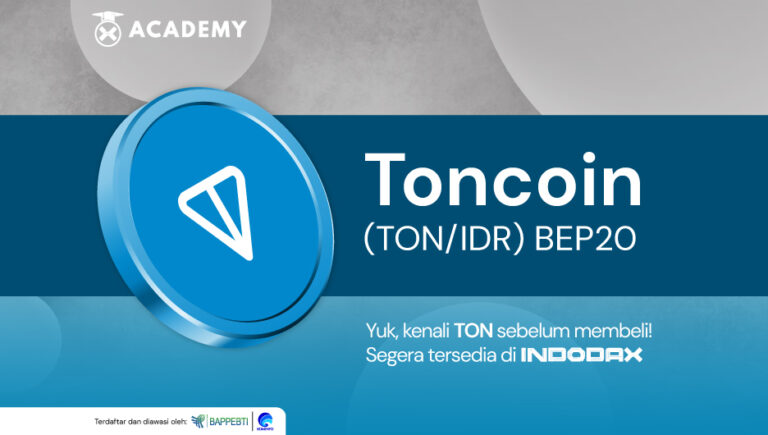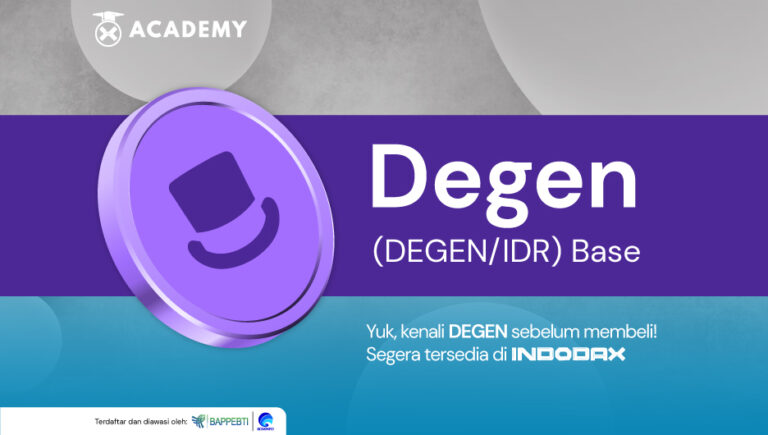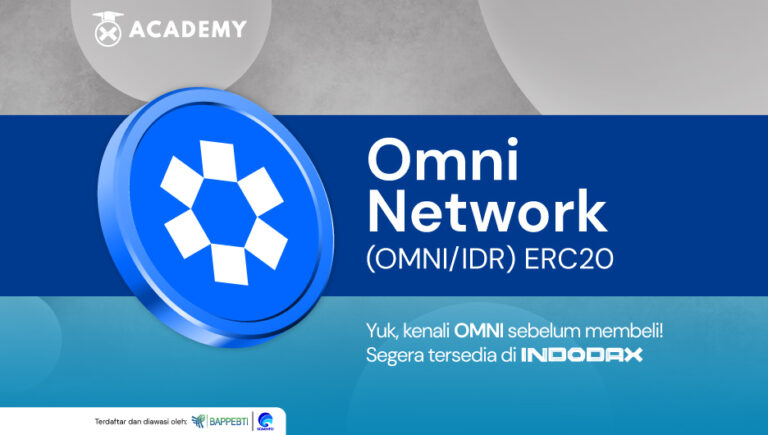With the growing use of smart contracts in the crypto industry, opportunities arise to exploit weaknesses to achieve financial gain. One increasingly popular practice is Maximal Extractable Value (MEV) which actors with high technical skills implement. MEV is a concept that refers to the maximum profit that can be obtained by a user or group of users from a particular DeFi protocol or smart contract.
The development of the DeFi ecosystem makes MEV increasingly relevant and plays an important role in understanding the dynamics of decentralized finance. The phenomenon creates opportunities for users to optimize their profits by understanding and responding wisely to transaction execution situations on the blockchain.
So, to understand what MEV is, its important role in the crypto world, examples of its application, how it works, its advantages and disadvantages, and how to avoid fraud, see the complete review below!
What is MEV (Maximal Extractable Value)?
Quoting chain.link, MEV is the maximum amount of value that can be obtained by a blockchain miner or validator by including, excluding, or changing the order of transactions during the block production process.
MEV occurs when block producers in a blockchain (e.g., miners, validators) can arbitrarily extract value by altering the order, inclusion, or exclusion of transactions in a block often to the detriment of users. In other words, block producers can determine the order of transaction processing on the blockchain and exploit that power to their advantage.
In a 2019 research paper entitled “Flash Boys 2.0”, whose authors include Chainlink Labs researchers Ari Juels and Lorenz Breidenbach, MEV and transaction reordering are not only explained as theoretical concepts but as dynamics that are already occurring on a large scale in the form of transaction frontrunning on decentralized exchanges and can have a significant impact on user experience.
At the beginning of 2021, the cumulative value of MEV extracted on Ethereum reached $78,000,000, which jumped to $554,000,000 by the end of the year. The value of MEV extracted on Ethereum currently stands at over $686,000,000.
Furthermore, MEV is increasingly called Maximal Extractable Value rather than the original term, Miner-Extractable Value. That’s because MEV is not limited only to miners in proof-of-work (PoW) based blockchains but also applies to validators in proof-of-stake (PoS) and other types of networks.
What is the Important Role of MEV in the Crypto World?
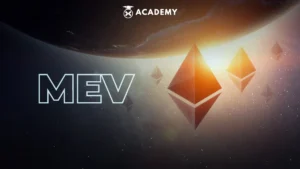
Mengutip theblock.co, MEV diketahui memainkan peran penting dalam ekosistem dunia aset kripto, terutama dalam konteks Ethereum. MEV menunjukkan nilai tambahan yang dapat diperoleh oleh validator blockchain (mereka yang membuat blok baru di jaringan) dengan memanipulasi urutan transaksi dalam blok yang mereka buat. Manipulasi ini, sering disebut sebagai “front-running”, dapat memberikan penambang sumber keuntungan ekstra selain imbalan blok standar dan biaya gas yang mereka terima untuk pekerjaan mereka. Sering kali, penambang mengubah urutan transaksi atas nama pihak ketiga dan biasanya “bribed” dengan sejumlah besar pendapatan sebagai imbalan.
MEV is a product of the decentralized nature of blockchain technology. In traditional financial markets, strict transaction orders are enforced to prevent front-running. However, miners are free to sequence transactions as they see fit in the decentralized world of cryptocurrencies.
While an integral part of the blockchain’s decentralized philosophy, such freedom can create situations where miners prioritize transactions that generate the greatest MEV, which may be detrimental to other network participants. When stakes are high enough, MEV can even incentivize miners to create blockchain forks that can potentially disrupt future transactions and compromise the security of the consensus layer.
How does MEV work?
Quoting chain.link, blockchain networks such as Bitcoin and Ethereum are immutable ledgers guaranteed by a decentralized network of computers known as “block producers,” including miners in the PoW blockchain and validators in the PoS network. These block producers are responsible for regularly aggregating pending transactions into blocks validated by the rest of the network and added to the global ledger.
While the blockchain network ensures that all transactions are valid (e.g., no double spending) and that new blocks of transactions are continuously produced (preventing downtime), there is no guarantee that transactions will be sequenced exactly as they were submitted to the blockchain. Since each block can only contain a limited number of transactions, block producers have complete autonomy in selecting pending transactions in the mempool (where block producers store off-chain unconfirmed transactions) to include in their blocks.
Although block producers, by default, sort transactions based on the highest gas price (transaction fee) to maximize their profits, the network does not require it. As a result, block producers can extract additional value by leveraging their ability to arbitrarily change the order of transactions, creating what is known as MEV.
With the need for certain resources and expertise in extracting MEV, block producers in a blockchain network often entrust the creation of blocks to a third-party network consisting of searchers, builders, and relayers. Searchers will look for MEV opportunities, create bundles from multiple transactions, and often contain other users’ transactions. The bundles are sent to builders, who combine the bundles into full block loads. Builders then make full blocks available to relayers, who serve as connection points to blockchain block producers. It’s worth noting that this is just one example of how block producers currently extract MEV, but the ecosystem continues to evolve quickly.
MEV often results in fees for regular users and often, this method may not be immediately visible to all users until after their transactions have been processed. This could include worse price execution for user trades where the MEV is withdrawn directly from the user.
3 Examples of MEV Implementation
MEV appears on the blockchain in several ways. The following are three (3) examples of MEV applications that you need to know, including:
1. Liquidations
Common MEV opportunities occur in the liquidation process of lending protocols. Lending protocols such as Maker and Aave require users to deposit collateral (e.g., ETH). The collateral is used to provide loans to other users.
Users can borrow assets and tokens from other users based on their needs (such as borrowing MKR to vote on MakerDAO governance proposals), subject to a certain percentage limit of the deposited collateral. For example, if the maximum borrowing limit is 30%, users who deposit 100 DAI in the protocol can borrow up to 30 DAI in other assets. The protocol sets the lending power percentage.
As the value of borrowers’ collateral fluctuates, so does their borrowing power. If the value of the borrowed assets exceeds, for example, 30% of the value of their collateral due to market fluctuations (the protocol sets this percentage), then the protocol allows liquidation of the collateral, which pays back the lender instantly (similar to a margin call in traditional finance).
Liquidated borrowers are usually charged significant liquidation costs, some of which are passed on to the liquidator, which is the MEV opportunity. Participants compete to process blockchain data to determine liquidable borrowers quickly, be the first to execute liquidation transactions, and earn liquidation fees for themselves.
2. Sandwich trading
Sandwich trading is another common method for MEV extraction. A scout will monitor the mempool for large DEX trades in sandwich trading. For example, if someone wanted to buy 10,000 UNI with DAI on Uniswap, then a trade of this size could significantly affect the UNI/DAI pair, potentially increasing the price of UNI substantially relative to DAI.
A searcher can calculate the approximate price effect of this large trade on the UNI/DAI pair and execute an optimal buy order right before the large trade, buying UNI at a cheap price. Then, they can execute a sell order right after a large trade, selling it at the higher price caused by the large order. However, trading sandwiches is riskier because they are non-atomic and susceptible to salmonella attacks.
3. MEV NFT
MEV in the NFT space is an emerging phenomenon and not always profitable. However, because NFT transactions occur on the same blockchain used by all other Ethereum transactions, seekers can use similar techniques as used in traditional MEV opportunities in the NFT market.
For example, if there is a popular NFT drop and a seeker wants a specific NFT or set of NFTs, they can program a transaction to be the first to buy the NFT or buy the entire set of NFTs in one transaction. Or if an NFT is mistakenly listed at a low price, a searcher can get ahead of other buyers and buy it at a low price. One prominent example of MEV NFTs occurred when a seeker spent $7,000,000 to purchase each Cryptopunk at the floor price.
What are the Advantages and Disadvantages of MEV?
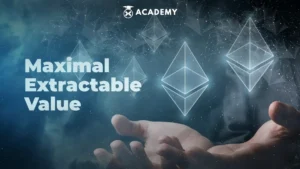
The advantages of MEV include significant financial opportunities for those who can use the information and situations within the transaction block. Additionally, rapid liquidation by MEV liquidators in DeFi applications helps ensure that lenders are paid quickly when borrowers fall below the specified collateral ratio.
Furthermore, blockers and seekers can also correct system errors quickly and potentially increase market efficiency. However, MEV practice also has shortcomings, such as injustice arising from unequal access to information and the potential for instability and uncertainty in transactions and markets.
MEV also contributes to an increase in the number of transactions the network needs to process, which can result in congestion and transaction slippage issues. In addition, the risk of attacks and market manipulation can also harm other users.
MEV’s Challenges and Strategies in the Crypto World
Quoting theblock.co, along with continuous developments in the world of crypto assets, strategies to reduce the impact of MEV exploitation also continue to develop. One effective approach involves utilizing fair sequencing services (FSS).
FSS is a decentralized transaction ranking service that aims to ensure fairness and predictability in transaction ranking thereby reducing MEV opportunities. By implementing FSS on Layer 2 rollups like Arbitrum, the smart contract economy can grow with the negative impact of MEV minimized. Another strategy involves the use of off-chain transactions and pooling.
When decentralized application users sign transactions and send off-chain trades with order preferences, all transactions can be completed in one batch. This practice makes transaction reorganization irrelevant because all transactions have the same price regardless of order, making replication more difficult. This increases complexity for miners or validators seeking to extract MEV, thereby protecting users from “invisible taxes.”
Protocols are also being developed to give users more control over their transactions. For example, users can determine the maximum slippage they can accept in a transaction. This limits the potential for miners to exploit price differences between when a transaction is sent and executed, thereby reducing the impact of MEV. While these reduction strategies show promise, it is important to note that eliminating MEVs completely in decentralized systems is a complex challenge. Nonetheless, by understanding and implementing these strategies, users can better protect themselves from MEV exploits and contribute to a fairer and more efficient crypto asset ecosystem.
How to Avoid Fraud in MEV?
So, how can fraud in MEV be avoided? To overcome problems that arise due to front running and sandwich techniques, several solutions can be implemented, including:
1. Implement a fairer consensus protocol
A consensus protocol is a mechanism used by a blockchain network to determine how transactions are authorized and entered into the blockchain. By implementing a fairer consensus protocol, such as PoS or Delegated Proof-of-Stake (DPoS), it is hoped that it can reduce the possibility of fraud or misuse of MEV.
2. Provide transaction transparency
By providing transaction transparency, network users can view transactions taking place on the network and ensure that they are conducted fairly. This can help prevent miners or other parties who use front running or sandwich techniques from abusing MEV.
3. Implement a monitoring system
By implementing a monitoring system, network users can actively monitor activities within the network and detect fraudulent actions or misuse of MEV. This can help prevent miners or other parties who use front running or sandwich techniques from abusing MEV.
4. Using smart contracts
By using smart contracts, network users can organize transactions in a fairer way and ensure that they are conducted ethically. Smart contracts can also help prevent miners or other parties who use front-running or sandwich techniques from abusing MEV.
Conclusion
In conclusion, MEV is the maximum amount of value that a blockchain miner or validator can obtain by including, excluding, or changing the order of transactions during the block production process. MEV is known to play an important role in the world crypto asset ecosystem, especially in the context of Ethereum. MEV represents the additional value that blockchain validators (those who create new blocks on the network) can gain by manipulating the order of transactions in the blocks they create.
As additional information, you can also read other interesting articles, such as the most popular NFT games and Magic Eden on INDODAX Academy. To increase your understanding of blockchain technology, you are strongly advised to explore the latest articles on INDODAX Academy.
INDODAX Academy presents various materials, ranging from basic concepts to more complex aspects related to blockchain technology. By reading the various articles available, you will gain a deeper understanding of this technology, including its application in various contexts, and also get the latest updates regarding developments in the crypto world.
Invest in Crypto Assets on INDODAX with Staking (EARN) Feature
Now, you understand what MEV is, its importance in the crypto world, examples of its application, how it works, its advantages and disadvantages, and how to avoid fraud in MEV.
Next, if you are interested in investing in crypto assets, you should choose a safe and trusted crypto exchange, namely INDODAX. Please note, currently at INDODAX there is a feature called crypto staking or INDODAX Earn.
In principle, this crypto staking feature allows you to secure your crypto assets in a way that is similar to storing funds in a savings account. The crypto assets that you lock through the INDODAX Earn feature will provide rewards, similar to the interest earned from savings.
It is also important to note, that the INDODAX Earn crypto staking feature can be accessed easily anytime and anywhere via the Mobile or desktop application on the INDODAX website, especially on the INDODAX Earn crypto staking page.
Let’s invest crypto assets on INDODAX with the crypto staking feature right now!





